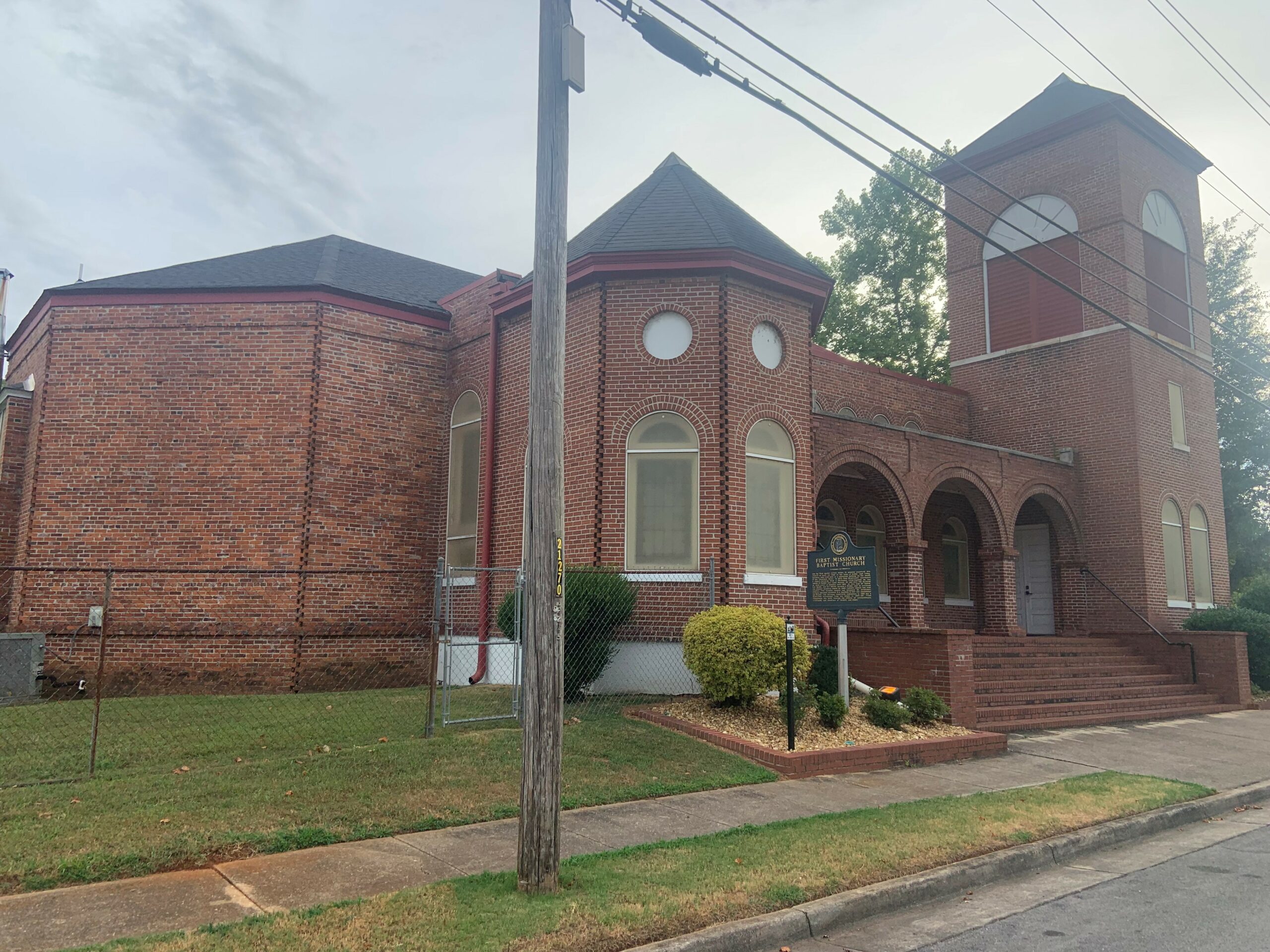First Missionary Baptist Church of Decatur was established in 1866 in northwest Alabama by 21 former slaves in the home of Ms. Jane Young under the leadership of the Rev. Alfred Peters following the Civil War and passage of the Civil Rights Act of 1866. In 1873, under the leadership of Rev. Crawford Peters, the church purchased its first sanctuary, which formerly belonged to a white Methodist congregation on Market and Canal Street NE in Decatur. In 1895, in response to rapid congregation growth, the church began preparations to build a larger facility. Under the leadership of Rev. Simon Robinson in 1910, the church purchased a building at the intersection of Vine and Grove Streets NW from Rev. E.A Bacon for $1,460.
In 1921, the current structure was designed and constructed by Wallace Augustus Rayfield for $1,250. The design and construction of the church were made possible through the contributions of professionals and working-class people in the church and community. Many of the people who gave to ensure that the church would be built were not wealthy, but they worked extra shifts, picked extra cotton, and washed extra clothes in order to donate their precious pennies, nickels, and dimes and the construction effort.
Wallace Rayfield was the second licensed African American Architect in American history. A documentary entitled “Finding the Cornerstone” recently aired on PBS, which explored the life and architecture legacy of Wallace Rayfield. First Missionary Baptist Decatur was included in the film. First Missionary Baptist Decatur prominently features many of the Neoclassical Romanesque architectural elements that would go on to become Rayfield’s signature style. Among those elements are the thick brick walls, rounded arches, large towers, magnificently vaulted ceilings, and beautiful stained-glass windows purchased with pennies, nickels, and dimes. Many of the architectural features reflected in First Missionary Baptist Decatur’s design are found in many other Rayfield designs, notably Birmingham’s Sixteenth Street Baptist Church
First Missionary Baptist Decatur has long served as a religious, cultural, and political nerve center for African Americans in Decatur in response to oppression and hate. In the 1930s First Missionary Baptist Decatur supported the Scottsboro Boys by serving as a meeting place from which the defense attorneys for the accused African American youth could address the black community about the progress of the case directly. In the 1960s, the church served as an organizing center for the legal effort that would lead to African Americans being allowed to serve as jurors in Alabama. Throughout its 158-year history, First Missionary Baptist Decatur has offered a safe haven of hope and love. The community cultivated within the church reassured generations of African Americans that they were, in fact, made in the image of God and that they, too, were American.
The Church has undergone two major renovations since 1919. In the 1980s, Church trustees secured a loan of $100,000 to finance the addition of an education wing, multiple classrooms, a nursery, a fellowship area, and a kitchen. In 1990, The Alabama Historical Commission added First Missionary Baptist Decatur to the Alabama Register of Landmarks and Heritage Sites. The Church was also featured in the Hidden Spaces photography exhibit recently hosted at The Alabama Center for the Arts and sponsored by the Muscle Shoals Heritage area.
Do you find this information helpful? A small donation would help us keep this available to all. Forego a bottle of soda and donate its cost to us for the information you just learned, and feel good about helping to make it available to everyone.
BlackPast.org is a 501(c)(3) non-profit and our EIN is 26-1625373. Your donation is fully tax-deductible.
Morgan County (Alabama) Archives: The Alabama State Historical Commission, First Missionary Baptist Church Decatur Historical Archives (The Deacon Curtis and Sister Gladys Smith Papers Collection)

